#which makes it counterintuitive and frustrating to deal with but also kind of fascinating
Explore tagged Tumblr posts
Text
maybe they'll be able to do it once collections are on Elasticsearch!!!
but heh, IMO kinkmemes were doomed from the start, because anonymity on AO3 is a polite fig leaf that exists at the whim of 1. the collection mod(s), and 2. whatever weird de-anoning bugs have crawled out of the complexities of the work/series/collection code. trying to actually use the Anonymous feature just kinda makes it painfully obvious that the intended use case is NOT giving creators a reliable way to mask their own authorship of a work. what's slightly less obvious is figuring out what IS the intended use case, until you realize the entire thing is tailored quite specifically for mods of challenges/exchanges that have a delayed identity reveal.
any "durable anonymity for creators" affordances are just kind of bolted haphazardly onto that. collections that exist Specifically To Grant Anon Status are almost a creative misuse of intended functionality, akin to chatty tumblr tags or... well... running a whole-ass anonymous prompt/response challenge in the comment section of a LiveJournal post.
except shittier and not fit for purpose, because so many of the reasons to WANT anonymity involve mod drama. like, kinkmemes As A Recognized Variant of prompt/response were basically spawned by the ability to offer a guarantee of mod-proof anonymity in LJ comment sections. AO3's version was never gonna work for that.
honestly, despite my (over)investment in both the site and the subculture it lives in, all my spiciest AO3 takes are really boring
the Work Bookmarks page should group bookmarks with user-added metadata separately, so you can find them without paging through all the ones that are just username + date
very glad blocking and/or muting are in the works; very much hope they will be separate features
collections would be way more useful if their discoverability wasn't absolute garbage, and i want to buy whoever's moving them onto Elasticsearch a drink and a pony
they'd be able to roll out a lot more long-demanded features if their shiny, all-volunteer, open-source codebase made it just sliiiightly easier to contribute minor bugfixes and grunt work without being Chosen for Full Induction Into The Mysteries of OTW Volunteering
whoever moved the "Alternate Universe - College/University" tag OUT from under the main "Alternate Universe" tag.... c'mere, man, I just wanna talk. was it a site performance issue? because if it was a site performance issue, the "Alternate Universe - Canon Divergence" tag is right there and 3 times its size and would actually benefit from being its own thing.
#i'm not even trying to dunk on AO3 for this really#it (like a lot of the collection/exchange code) is a relic of the early days of AO3 trying to be too many things to too many people#which makes it counterintuitive and frustrating to deal with but also kind of fascinating#ao3#ao3 discourse#the fun non-infuriating kind of discourse though. the kind that consists of petty griping about mind-numbingly specific inside baseball.
121 notes
·
View notes
Text
Teaching Yoga: Working with Chronic Pain
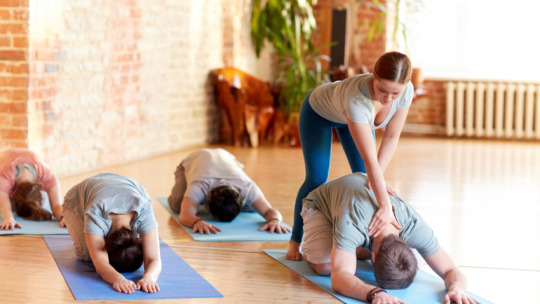

As a yoga educator, it is not uncommon to locate yourself showing individuals who are in a certain quantity of pain. This can be befuddling, particularly if you are brand-new to mentor. There is always an anxiety you might make things even worse, that you do not understand sufficient composition which you are inadequate in some means to deal with these kind of problems.
Note: I am chatting right here regarding bone and joint discomfort that has been checked out with no genuine adequate option given. It may have been offered a name yet not a service. To help navigate these circumstances, some things are beneficial to remember.
Tissue Damage and Pain
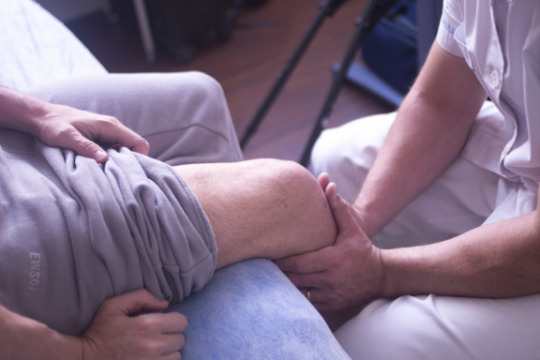
The first point to bear in mind is the truth that our bodies heal. What should occur, and typically does occur, when we hurt ourselves, is that the body lets us know.
We experience a level of pain about proportionate with the quantity of damages we have done to ourselves, and also gradually, as the body heals, the pain ebbs away. If it is simply a bumped knee or arm, the pain may decrease in a matter of mins, and the only reminder we are left with is a little swelling. On the other hand, if we break a bone, the pain might be extreme, and it might take weeks for the discomfort to subside and also a few more weeks prior to typical function is restored.
If the discomfort does not diminish, nevertheless, we require to ask ourselves initially whether we are doing anything that may be worsening the injury-- something in our everyday life, or perhaps something we are performing in yoga exercise. Sometimes in yoga, we can get involved in the routine of stretching right into a discomfort reasoning we are "reaching it." We could define a "wonderful pain," but usually we are just pulling on an item of cells that is already damaged, it may give us short-term relief due to the fact that it transforms the sensory input, but the pain after that comes back, and if we maintain doing this the injury doesn't have a possibility to recover as well as may also get worse.
While it is real that we need to maintain relocating after injury, to keep some variety of activity and maintain the area "mapped" in our brains, it is necessary that we find a balance between the remediation of function and also the avoidance of re-injury. A great deal of the understanding we have to do below is to pay attention very carefully to what we truly feel in our body, as opposed to impose on it what we think we should do and also attempt to be person while our body recovers.
Try to remember that after an injury, particularly one that has reduced our task for some weeks, our tissues-- be they ligaments, tendons, muscular tissues or fascia-- will certainly have damaged and also be less resistant to the movements they are included in. It will certainly take additional weeks of gradual recovery prior to they are back to normal.
Pain Without Tissue Damage
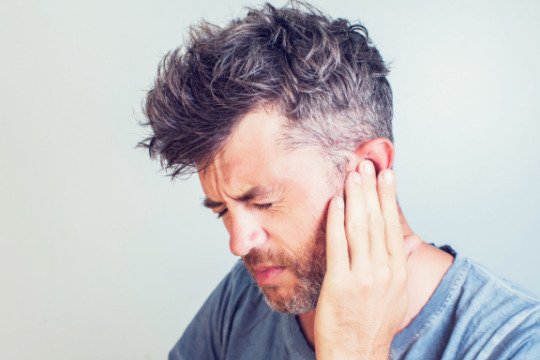
The 2nd thing we need to remember when checking out pain is a little counterintuitive. It could be that there is no more any damage to our cells. They may have healed, yet we are still suffering. This is often the case in long-term discomfort or what is often called "chronic discomfort." This type of discomfort has puzzled medical professionals throughout background, however just recently there have been great strides made in our understanding of how this sort of discomfort comes about.
And it's fascinating ... It used to be believed that we have discomfort nerves and also that if we damaged ourselves, a signal would travel up the discomfort nerve and ring the pain bell in our brain to allow us know we have actually harmed ourselves, and just how bad it is. Currently it's thought that we do not have pain nerves in any way, only the nociceptors defined below, which lug details that obtains modified.
However, a moment's reflection will certainly signal us to the reality that this "damages as well as signaling" pattern is not always present when it pertains to discomfort. Some examples of back discomfort as well as poor frustrations show that extreme pain can exist with very little, if any, tissue damages. These seem specifically meaningless sorts of discomfort, with the signaling being out of proportion to the problem.
There are various other times when our attention is absorbed in something, as well as we injured ourselves yet don't actually notice up until a huge swelling shows up the next day. Thus, our ability to overlook pain, to mute such signals, suggests that discomfort is in some ways much more similar to feelings than it is to senses such as sight or hearing.
Another sensation that has been extensively examined in recent times is "phantom arm or leg" discomfort. People that have actually shed an arm or leg, either through mishap or disease, might grumble of an extremely specific pain really felt in the amputated arm or leg. The discomfort might be accurately referred to as sharp or boring, hurting or itching. It looks like other somatic pains in nearly every method, other than, of training course, there are no tissues there.
So where is the pain coming from? What factors are causing pain in instances such as this?
Blurring the Pain Signal
When we hurt ourselves, specific nerves, called nociceptors, pass info to the brain from the area of damages, informing it that damages has actually occurred. However, on the means up to the mind, the signal is changed by other components of the brain. These adjustments to the signal will be based on previous experience, on expectation, on one's general state of anxiety and on that person's basic sense of wellbeing (or feeling of unease).
So, if we stub our toe, something we have actually most likely done often times, the details passed to the mind will know, yet it might harm more if we are cool and also unpleasant, as well as less so if we are delighted and also fired up. The very same information will have been modified by one's current mindset either to amplify or to downscale the sensation.
Now picture exactly how a person in their 40s or 50s with knee pain or neck and back pain could respond if she or he goes to a wellness specialist that tells them that their knee or back joints are obtaining old and also worn. Nearly certainly, that individual will certainly often tend to believe it will not obtain much better, that they are simply degenerating. They will certainly adapt as well as prepare themselves mentally for "seniority" and also all the beliefs we have regarding aging.
This common belief in the link in between deterioration and also discomfort might well be driven deeper right into our psyche by an x-ray or MRI scan that illustrates the "damages." Currently any signal we obtain from a pressure in the knee or back will be changed on its trip to the mind with all those concerns as well as stress and anxieties that have actually lodged into a person's awareness. This is exactly how chronic discomfort typically begins.
Now I'm fairly sure if you are reviewing this, you may well be claiming to yourself, "However surely we understand arthritis triggers pain, or damaged knee cartilage triggers pain or a disc that has actually herniated reasons discomfort." Well, to some degree you are appropriate: when these things first occur, pain and also discomfort are commonly felt. What is much less well understood is that offered time, in many situations the body heals as well as we overcome it. We will certainly be entrusted some physical changes-- the disc may still extend, the cartilage will still show damage and the arthritic joint will certainly reveal bony change, yet it will not be accompanied by pain.
Here are some data that may amaze you: MRI research studies of healthy adults and also elders revealed that 98% of them had arthritic changes in their cervical spine, without any going along with discomfort. Some 50% of adults were revealed to have rotator cuff tears that they did not understand around, 85% of asymptomatic adults had arthritic adjustments in their knees, 48% of them had actually harmed cartilage material as well.
There are lots of other comparable stats. We ought to not think of things like scoliosis, kyphosis, as well as lordosis as reasons of pain. It is now relatively well recognized that persistent pain is much better associated with stress and anxiety, anxiety, and worry that it is to much more structural problems like joint inflammation, disc problems, scoliosis and a host of other physical "conditions."
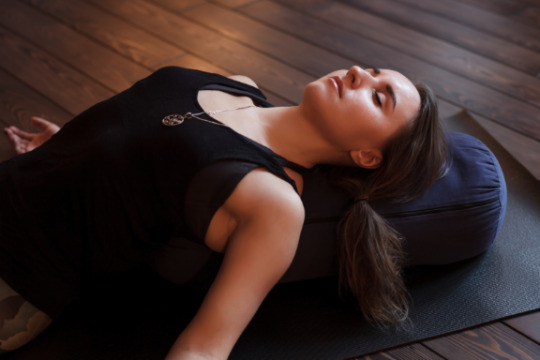
Bodies are remarkably versatile if they are provided time to adapt, and also although there are unquestionably some individuals who endure when a condition transcends a factor of restructuring itself, there will certainly be numerous other individuals with comparable conditions that do not have discomfort. In the last couple of years, this relationship between architectural problems as well as discomfort has been liquifying, as well as better explanations for pain are now being placed forward.
Teaching Yoga to Students with Chronic Pain
As yoga exercise instructors, what are we to construct from all this? It is really essential is to make certain we don't accidentally increase a pupil's level of stress and anxiety by showing indications of concern ourselves. The language we utilize must be guaranteeing instead of over-cautious. As well as when we ask them to relocate via some asanas there is something else to keep in mind with individuals in chronic pain: it is not allow them experiment "distracting" discomfort-- i.e., discomfort that maintains requiring their attention.
This is because of something that has been explained by the professional scientist Teacher Lorimer Moseley as "neuro-tagging." If I move in a certain method and also it triggers pain, and also I maintain duplicating the same move regardless and keep obtaining the very same pain, my mind will start to connect the two points until it comes to be difficult to relocate without pain, also once the tissues have actually totally healed. In many cases, this labeling becomes severe up until nearly any motion hurts as well as we pull away right into immobility, which intensifies the trouble further.
How do we get out of this? Well, there are two or three things that can help. We look for a means of taking on the movement that does not injured. So, for circumstances, if rounding the back to pick something up off the floor harms, see if the student can discover a way of rounding the back that doesn't hurt, explore Marjarasana (Cat Pose) or Balasana (Kid's Pose), as an example. It is essential to register the reality that it is not just rounding the back that is the trouble, however the context in which you round the back. This way, you start to damage the web link in between the movement as well as pain.

As the student gains confidence, obtain them to see just how much they can round the back while standing, without prompting discomfort, possibly by softening the knees or placing the hands on the knees to help take the weight, anything to damage the link in between both events (i.e., rounding the back as well as pain). It would certainly be similar with knee flexing. If bending in one certain scenario harms, obtain them to try it in an additional scenario as well as slowly munch away at the association in between the pain as well as the movement.
Another thing we can do as educators is to suggest various other experiences to focus on throughout the activity: the body's call with the floor, as an example, or sensations of softening or stiffening in the body, or the sensation of the breath as well as the moving of weight as we relocate. All these things will help to progressively lead people far from mentally mosting likely to their discomfort and also help them experience themselves a lot more effectively.
Body Mapping
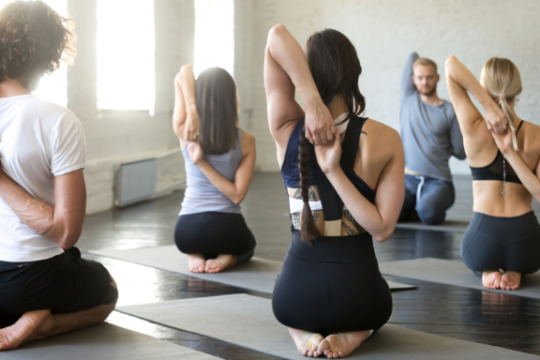
One various other thing that can be helpful is to think about the means we map motion in our mind. Movements that we perform frequently are "mapped" on our sensorimotor cortex. The even more focus we offer to a movement, as well as the much more on a regular basis we execute an action, the more thorough the "map" becomes.
To make this more clear, consider the mastery you have in your fingers compared to your toes. The relative stupidness of your toes is due to the fact that we do not utilize them in any significant way, so they lose their mapping. If you are born with no arms, your feet can come to be as active as fingers.
So how does this associate with discomfort? There is some proof to sustain the theory that chronic pain is linked with bodies that are improperly mapped. Or rather persistent pain seems to trigger a "smudging" of the injured component of our body's representation in the mind. It appears that when we harm ourselves, nerve cells that adjoin the location of the mind that stands for the injured component are hired right into the map, to highlight what has happened, so we can "feel it a lot more."
This is ideal, and also as we recover, those hired nerve cells should go back to resuming their normal obligations. If, nonetheless, we come to be distressed about the injury, if we stop moving it, as well as if we provide it excessive uneasy focus after that those neurons, rather than resuming typical tasks, might hire also extra nerve cells to assist the area we are protecting.
Soon the mind map of the broken area will have expanded beyond its regular limits. This is called "neuro-smudging" a term created by discomfort researcher David Butler, and also it is connected with changes in experience and also persistent pain.
Yoga can assist in three major ways: First, it can minimize anxiety about the discomfort for all the factors mentioned above, possibly mainly showing that after some weeks it's extremely not likely that there is still tissue damages. Second, it can assist redefine the mind map of the broken area by putting it via attentive and varying motions, and as confidence rises, gradually enhancing the variety of activity up until it is back to normal feature. And also third, we can help people grade their exposure to the movements that hurt them by reducing their motions down and also helping them observe at what point things come to be fretting for them. Enabling them to alleviate towards as well as away from the movement up until they develop some self-confidence as well as can increase their variety of movement.
5 notes
·
View notes